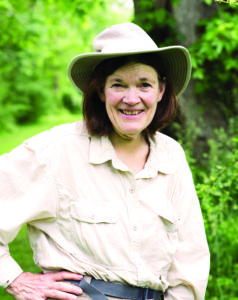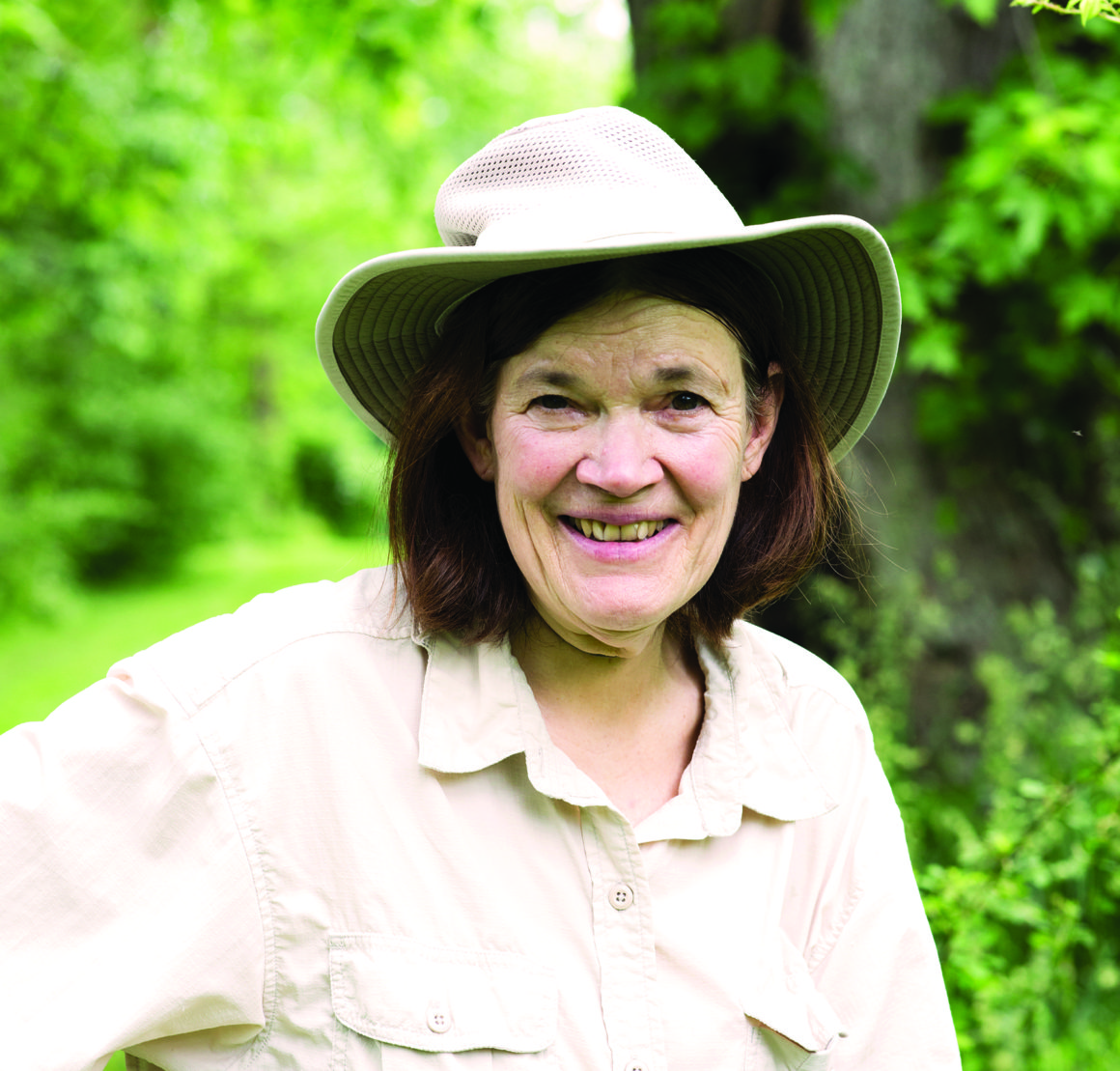 An era of instant gratification is amongst the greatest challenges to the world of conservation. Some people have difficulty understanding how their actions today impact the world of tomorrow. Others find it frustrating that nature has her own pace and planting seeds may take time before bearing fruit.
An era of instant gratification is amongst the greatest challenges to the world of conservation. Some people have difficulty understanding how their actions today impact the world of tomorrow. Others find it frustrating that nature has her own pace and planting seeds may take time before bearing fruit.
Conversely, Sharyn Magee, Washington Crossing Audubon Society (WCAS) President, recognizes that a steadfast devotion to conservation, along with the patience and dedication necessary to carefully document findings, results in positive outcomes from which others may benefit far into the future.
Her commitment to long term conservation merits Sharyn Magee as the July 2019 FoHVOS Force of Nature.
Sharyn joined WCAS decades ago and began attending their field trips. She credits Hannah Suthers for introducing her to bird banding at Featherbed lane. She got involved with a Cornell sponsored project called, “Birds in a Forested Landscape” and continued its mission even after the funding ran out. Her years of mapping breeding birds has informed her positions on some of the most pressing local matters.
Ms. Magee joined forces with FoHVOS Stewardship Director Michael Van Clef on an important study that researched bird breeding sites in a regenerating forest. The study noted a negative correlation between bird and deer populations and a positive correlation between native plant availability and important bird habitat. Their work corroborated the conventional wisdom that suggests that deer overpopulation and invasive species proliferation are harmful to local habitat.
Armed with plenty of scientific data to validate her views on local issues, Sharyn Magee has engaged in tireless advocacy on behalf of WCAS. Most recently she has taken stands against the PennEast pipeline and for considering environmental impact when determining the most appropriate housing development sites. Her positions are well reasoned and pragmatic.
“More data equals better decisions and better advocacy in terms of ill-conceived projects like PennEast,” said Ms. Magee to explain her unwavering position that running a pipeline through Baldpate Mountain would do irreparable harm.
She has concentrated her bird census on areas impacted by PennEast, including an owl survey two winters ago in conjunction with New Jersey Conservation Foundation, documentation showing the highest density of breeding neo-tropical birds, and references to the Louisiana water thrush – an indicator species – who only breed at high quality streams.
Her sense of urgency is heightened due to the fragility of Baldpate Mountain. She has monitored not only the Ted Stiles Preserve at Baldpate Mountain, but also the larger Sourland Ecosystem preserves. Baldpate, she explains, has a higher quality understory since its steeper lands weren’t farmed and those areas came back first with highest quality parallel to the slopes.
Baldpate Mountain has some of the highest quality habitat but is among the most vulnerable due to its size and shape.
“Baldpate is special because it has the highest density of breeding neo-tropical birds,” Magee shares, “Yet it is so fragile since it is already the minimize size for interior forest spaces. Its long and narrow shape results in only small areas of high quality habitats with too much edge habitats.”
Ms. Magee expressed frustration that the Division of Fish & Wildlife agrees with her conclusion and strongly came out against running a pipeline through Baldpate Mountain, but unfortunately, they do not have the final say.
Another important local issue surrounds the state’s requirement to build and offer more affordable housing in Hopewell Valley. Ms. Magee supports Hopewell Township’s priority to build its new developments behind the Pennington circle in an area known as the Zaitz tract but has concerns about proposed development that may occur in the current BMS location. “Building behind the Shoprite makes sense because it would cause the least environmental disturbance,” Magee shared but explained that the area nearest the bridge to Pennington is valuable and should be protected.
She applies the scientific methods to stewarding her own property. She lives on 5 acres of land that includes two acres old woods and two acres young forest. She replaced invasive patches with native and planted understory to attract birds. Over time she has experimented with different plant mixes to increase berries and pollinators.
Her parting advice was to encourage our readers to actively contribute to eBirds and join global efforts to populate current data.
Sharyn Magee has furthered the FoHVOS mission through her dedication and commitment to conservation and we are proud to name her our FoHVOS Force of Nature.



